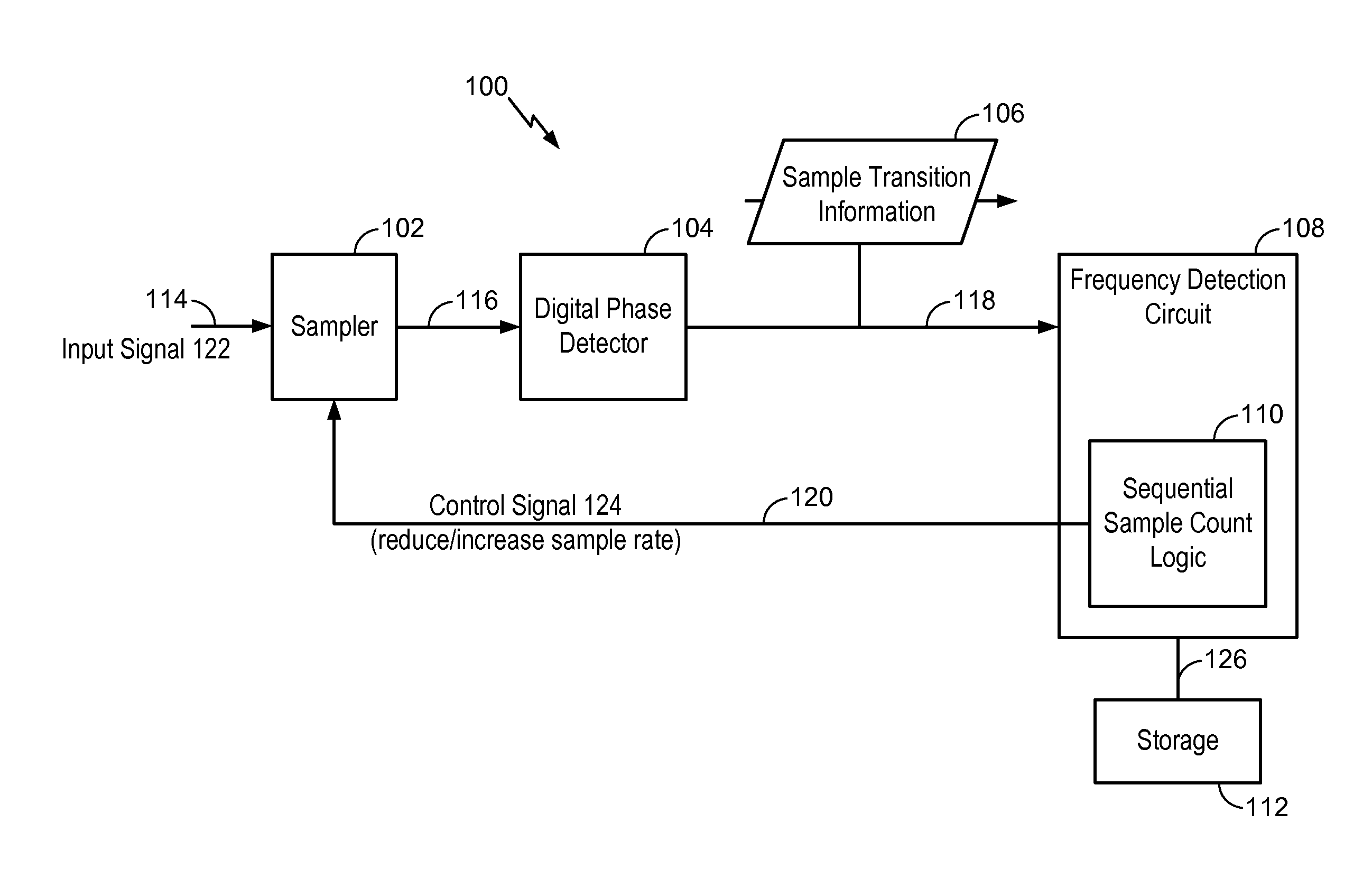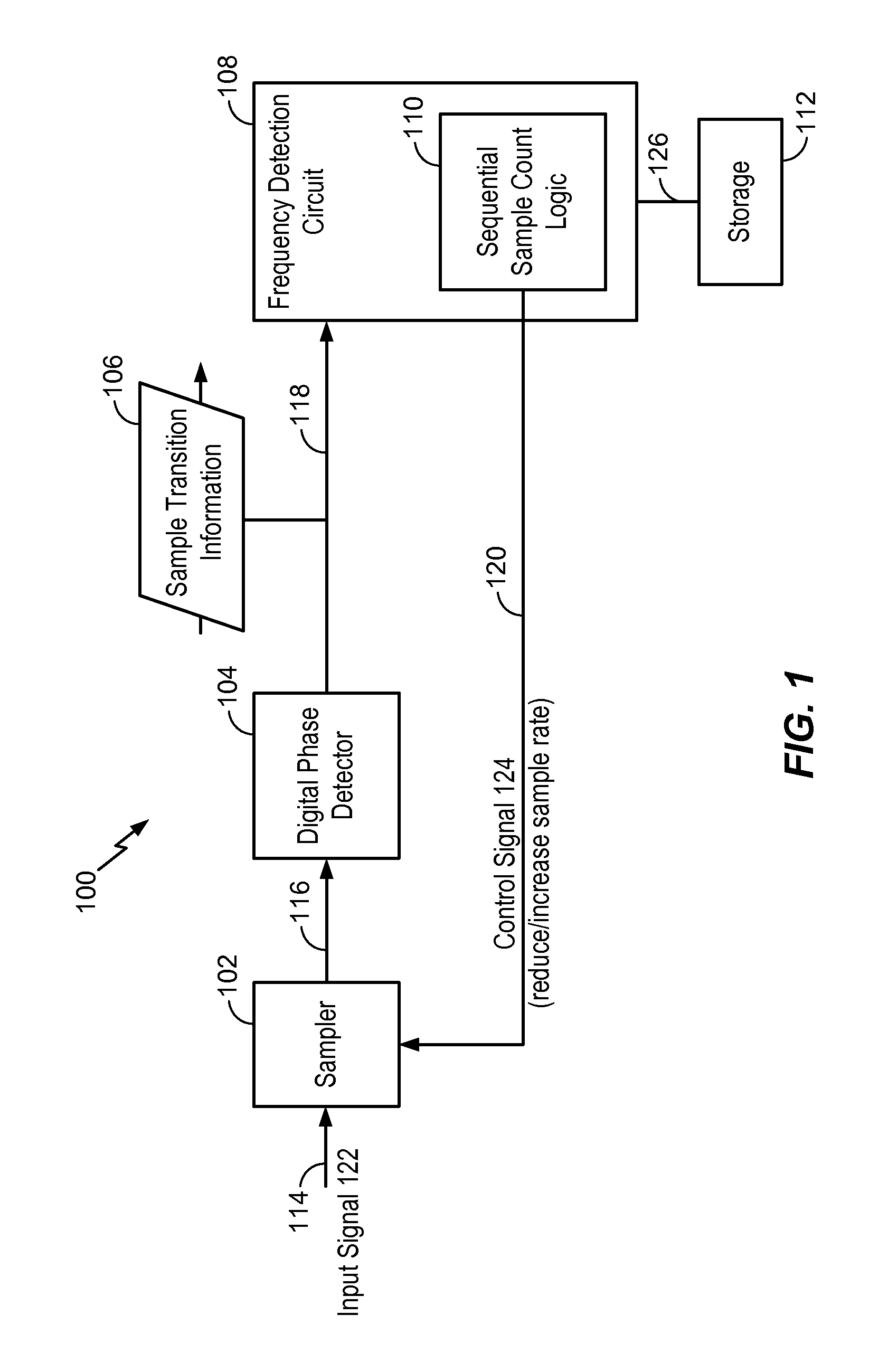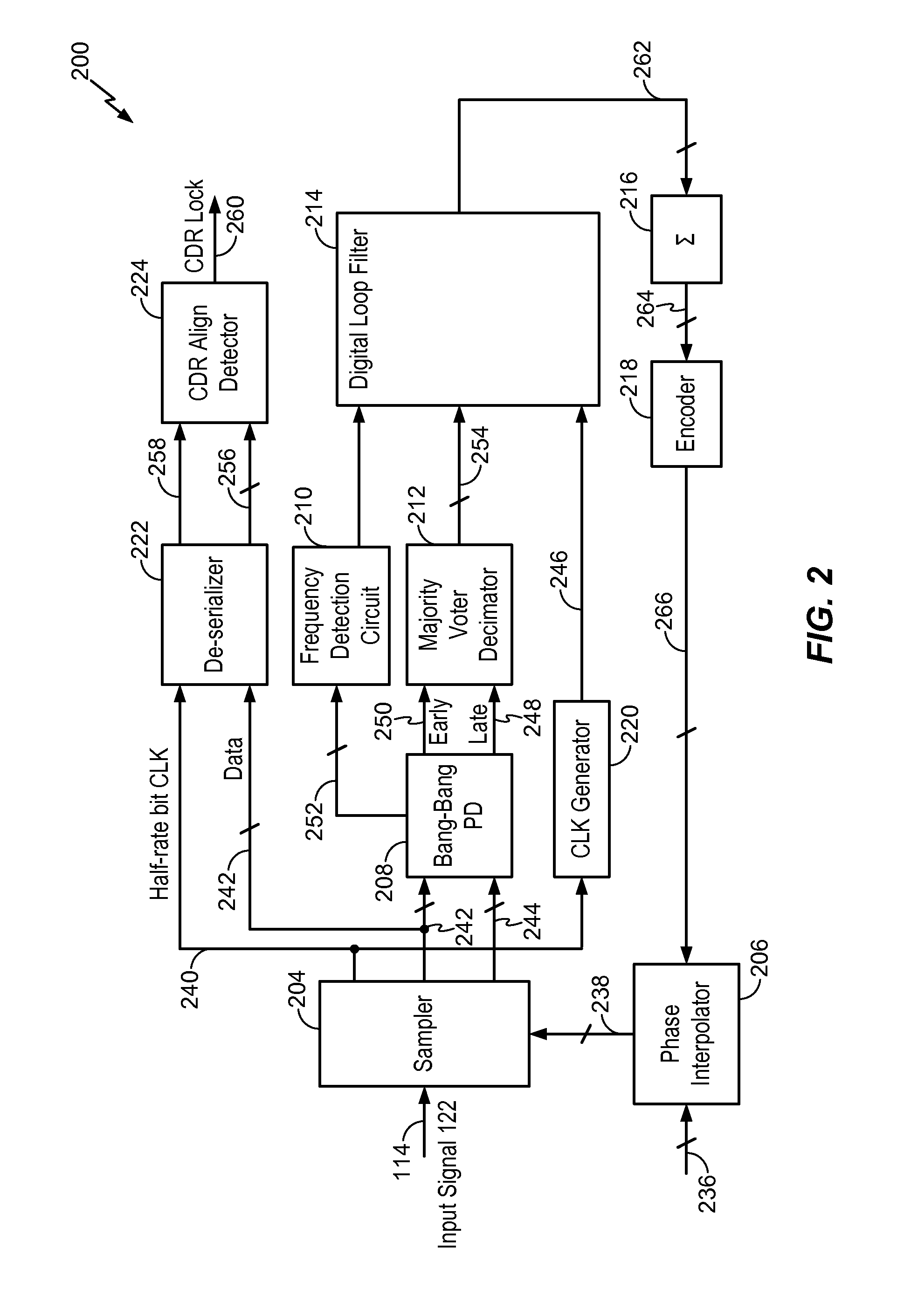Method and digital circuit for recovering a clock and data from an input signal using a digital frequency detection
a digital frequency detection and clock and data technology, applied in the field of method and digital circuit for recovering a clock and data from an input signal, can solve the problems of more overhead, slow circuit response time, and degradation of clock and data recovery circuit performance, and achieve the effect of reducing loading
- Summary
- Abstract
- Description
- Claims
- Application Information
AI Technical Summary
Benefits of technology
Problems solved by technology
Method used
Image
Examples
Embodiment Construction
[0022]A clock and data recovery (CDR) circuit may be employed at a receiver to recover a clock signal and data from a received input signal, where the received input signal does not include a reference clock signal. For example, the received input signal may be a non-return to zero (NRZ) input signal that does not include a reference clock signal and that may be encoded in accordance with a standard, such as an 8b / 10b standard. The pull-in time and locking time of the received input signal at the receiver affects the speed of the receiver. The pull-in time and the locking time may be improved by including a digital frequency detection circuit within the CDR circuit.
[0023]The digital frequency detection circuit may utilize transition timing information generated from sequentially sampled values at a digital phase detector to determine whether the sampling rate of the input signal needs to be adjusted in order to lock on to the frequency of the input signal. The digital frequency dete...
PUM
 Login to View More
Login to View More Abstract
Description
Claims
Application Information
 Login to View More
Login to View More - R&D
- Intellectual Property
- Life Sciences
- Materials
- Tech Scout
- Unparalleled Data Quality
- Higher Quality Content
- 60% Fewer Hallucinations
Browse by: Latest US Patents, China's latest patents, Technical Efficacy Thesaurus, Application Domain, Technology Topic, Popular Technical Reports.
© 2025 PatSnap. All rights reserved.Legal|Privacy policy|Modern Slavery Act Transparency Statement|Sitemap|About US| Contact US: help@patsnap.com



